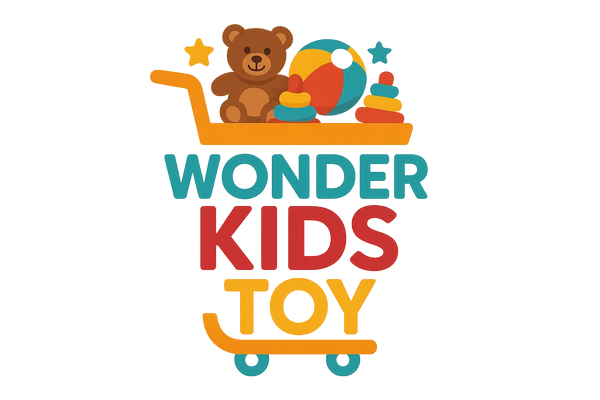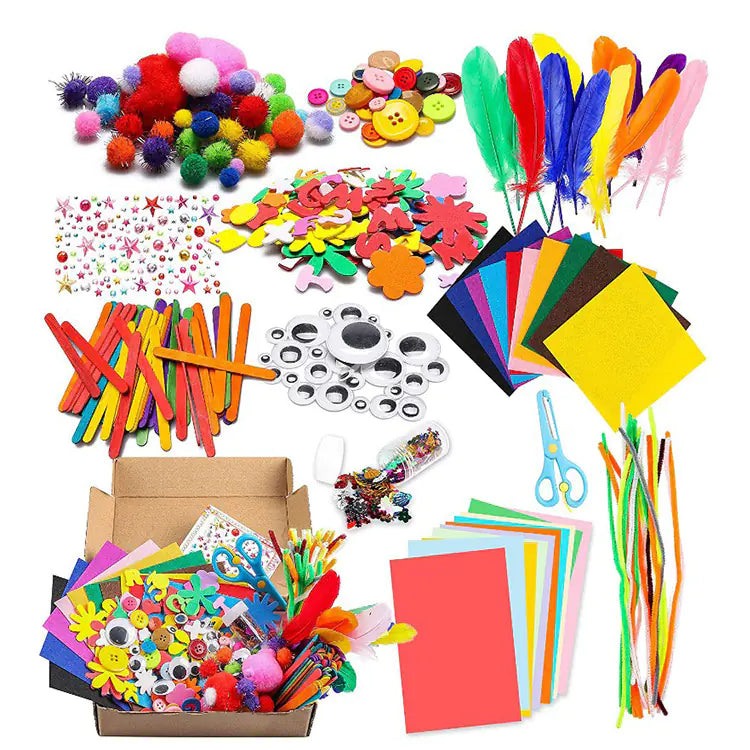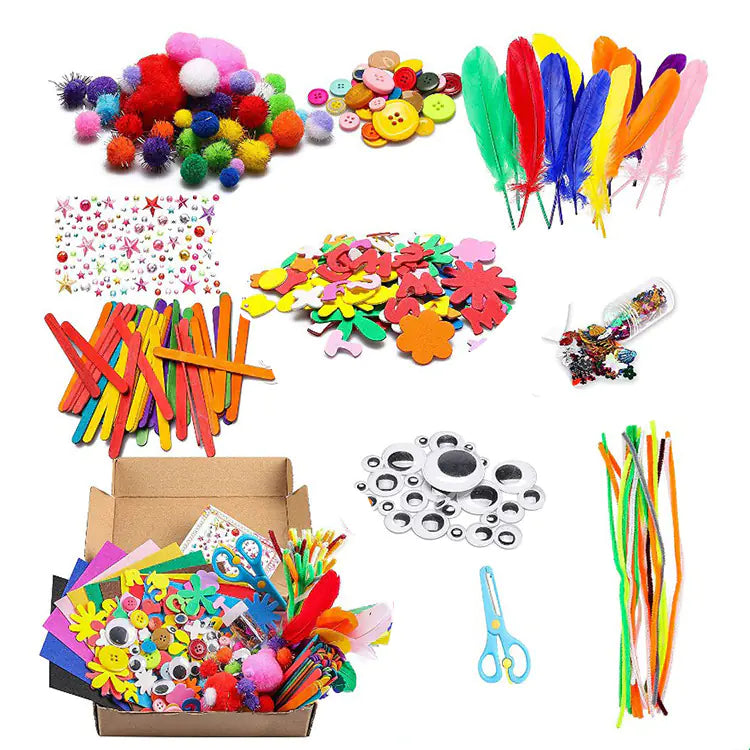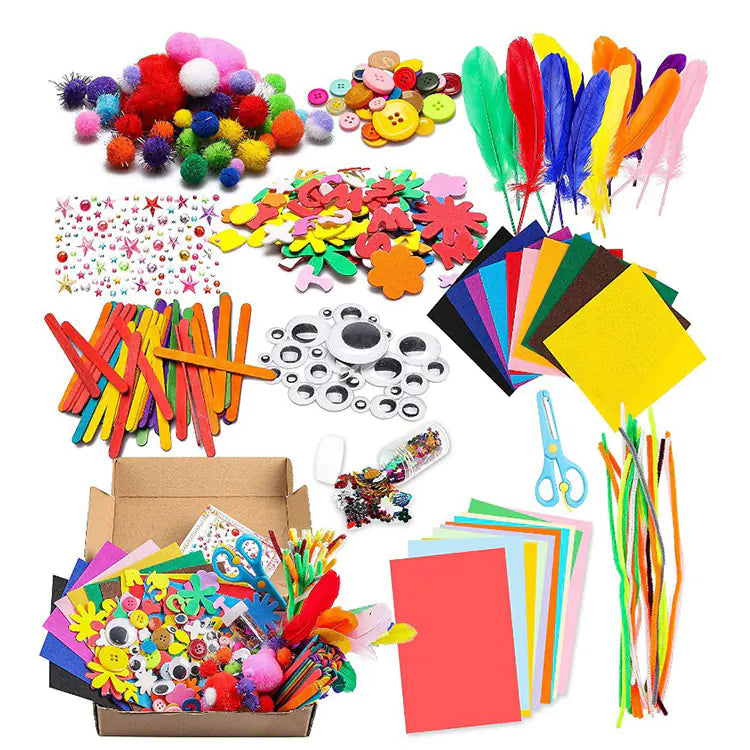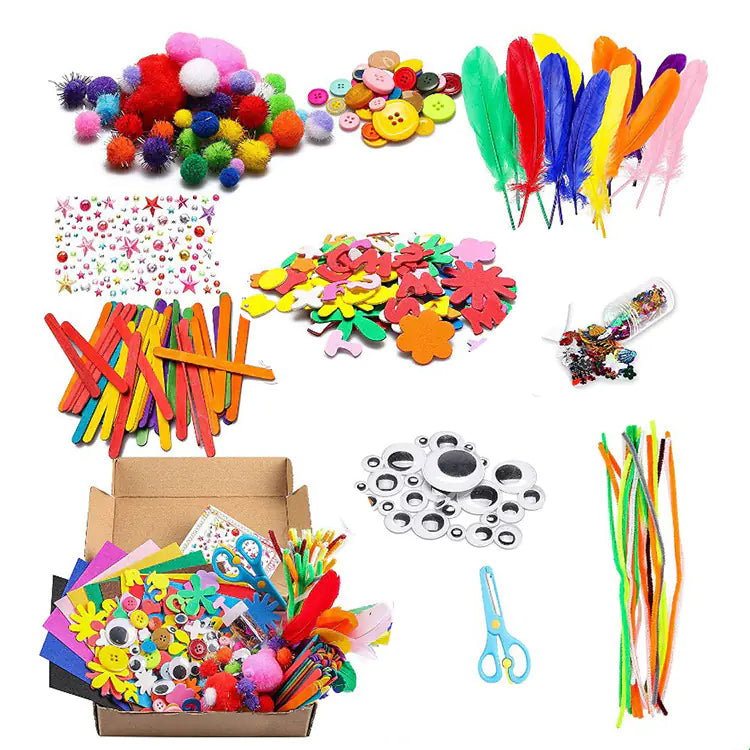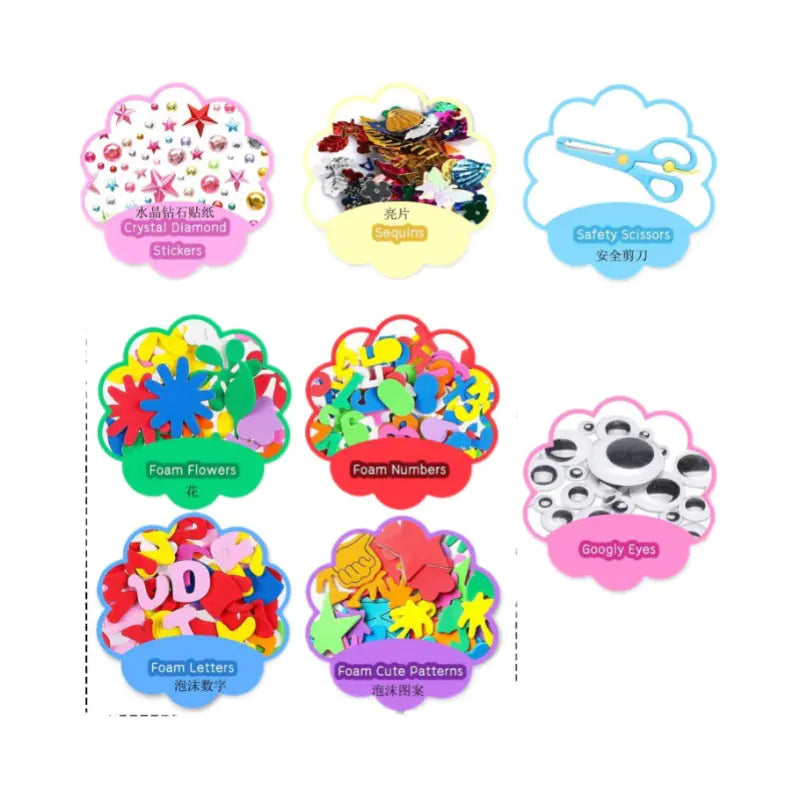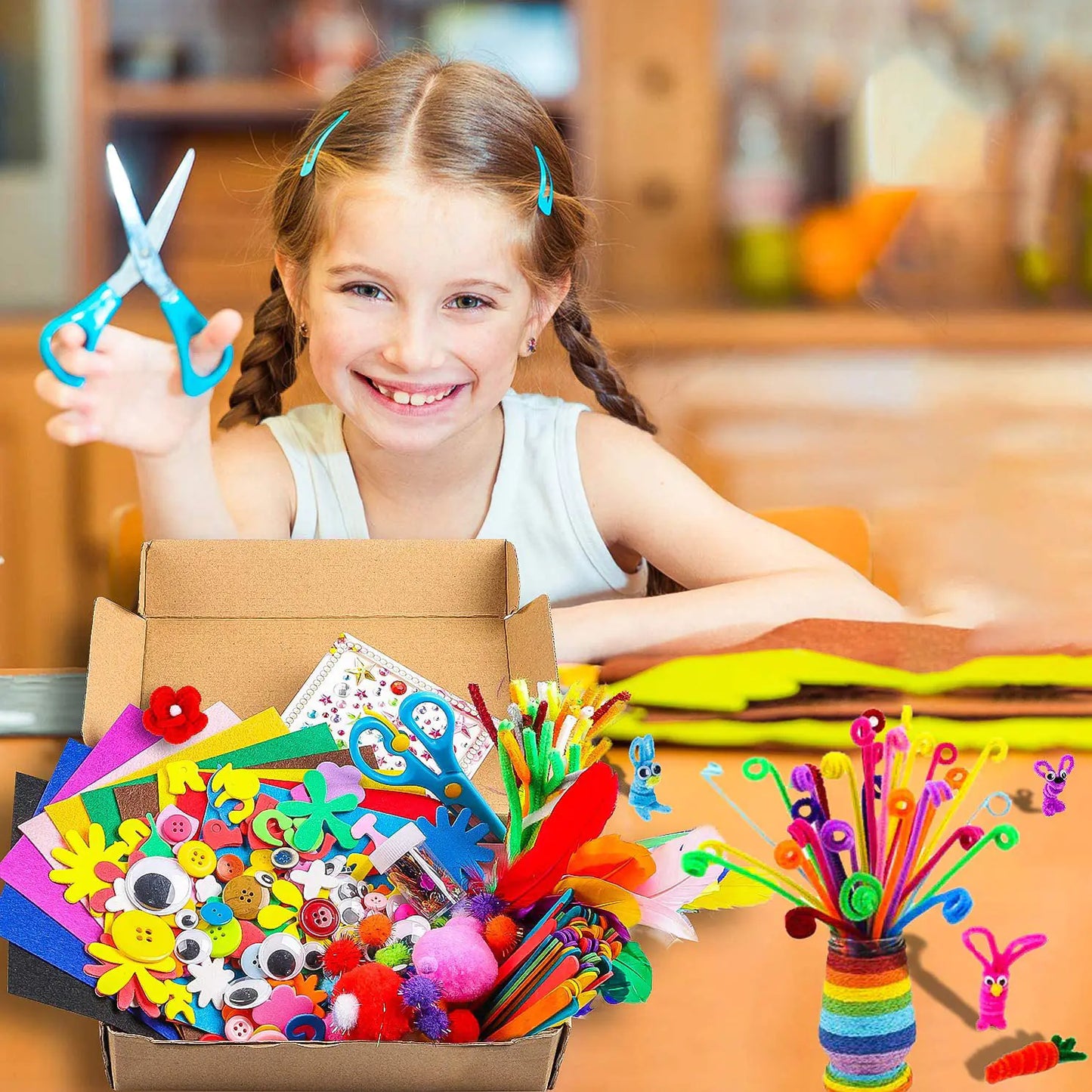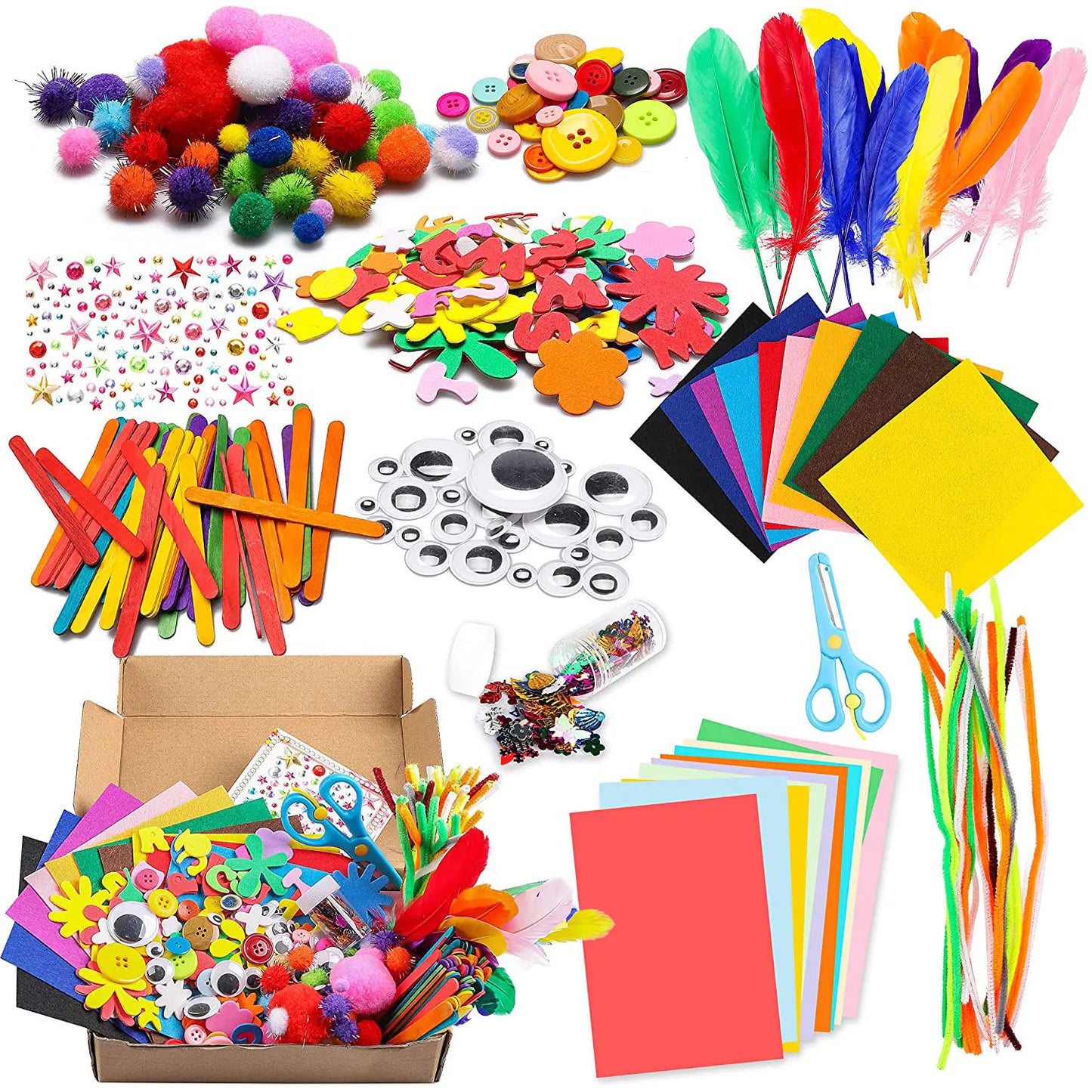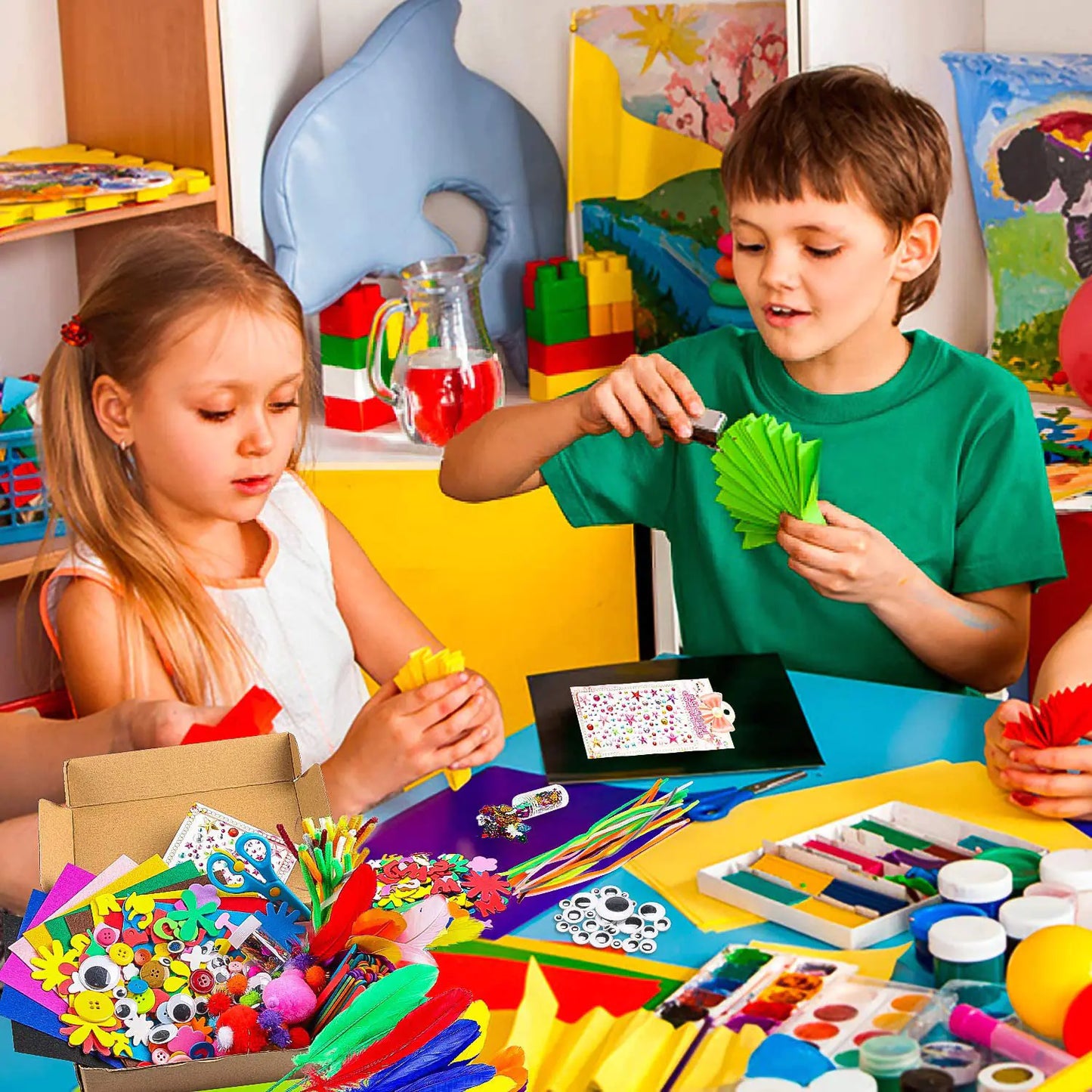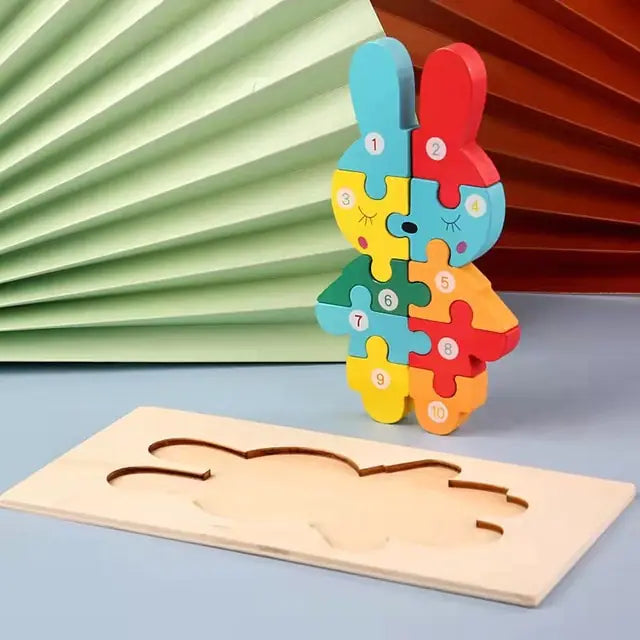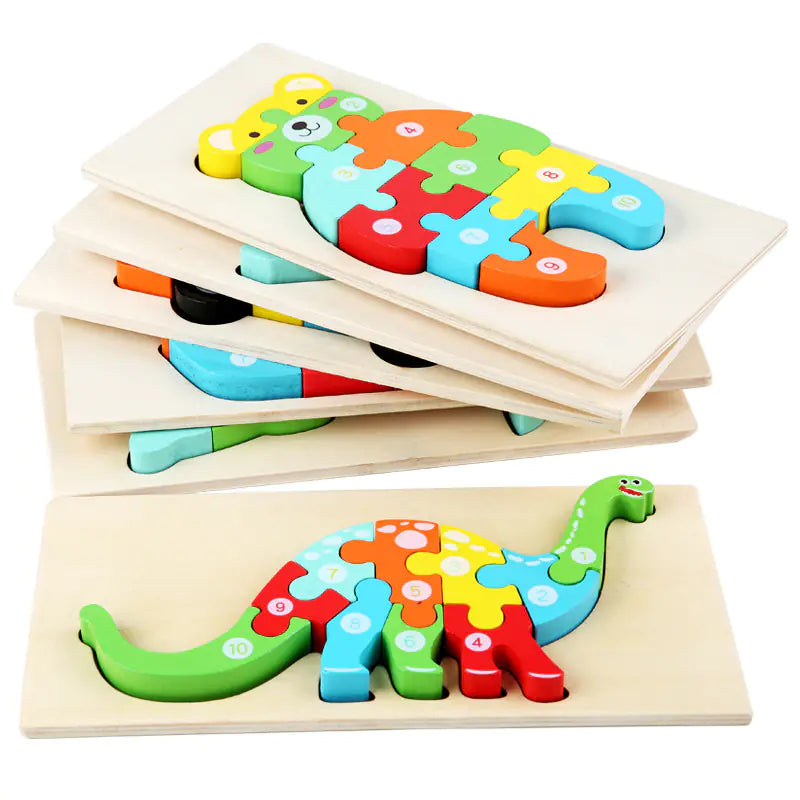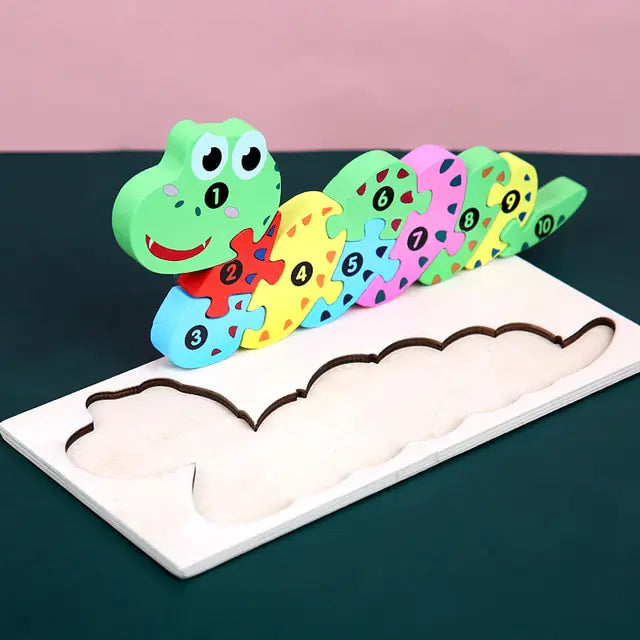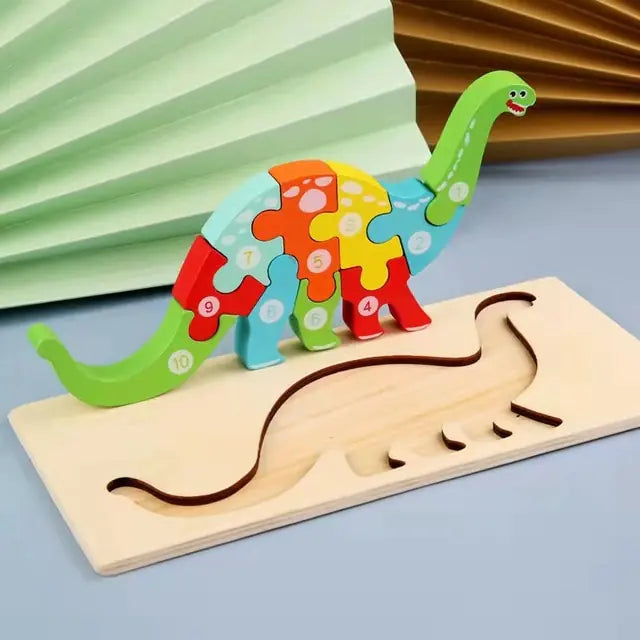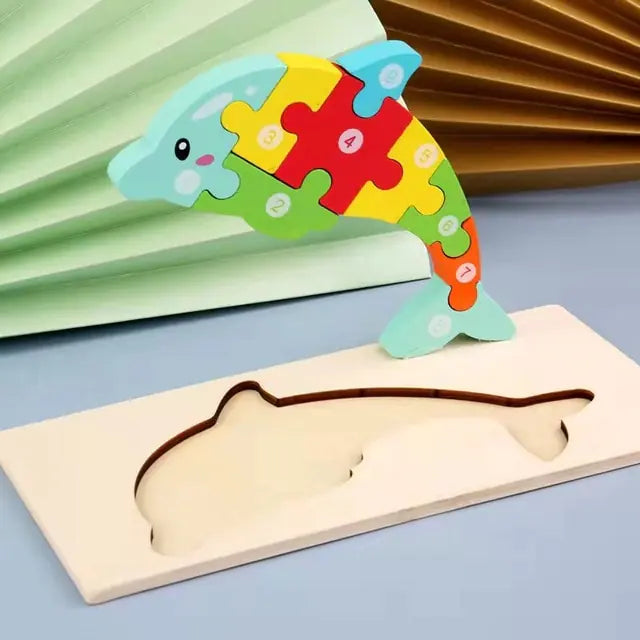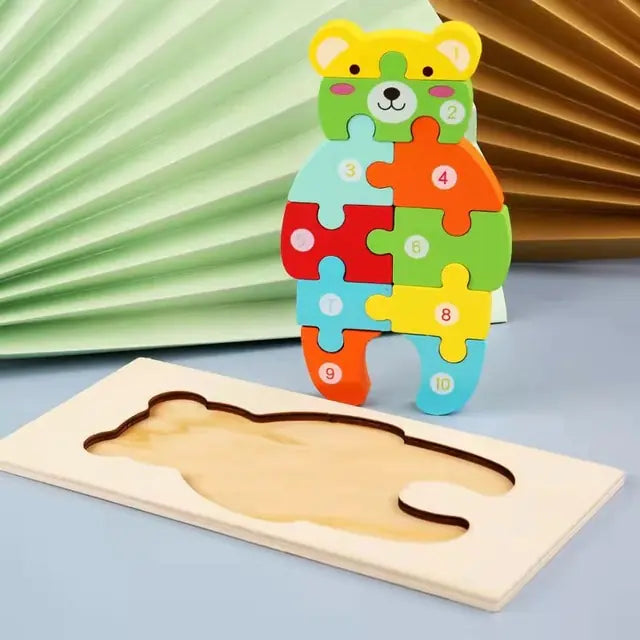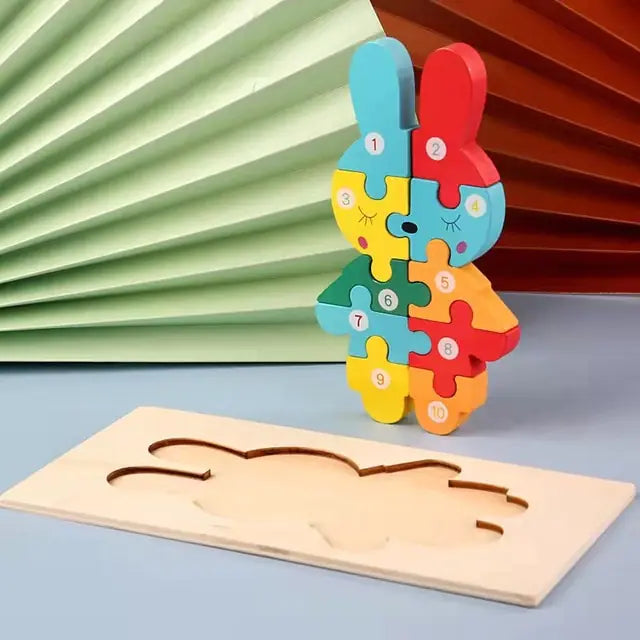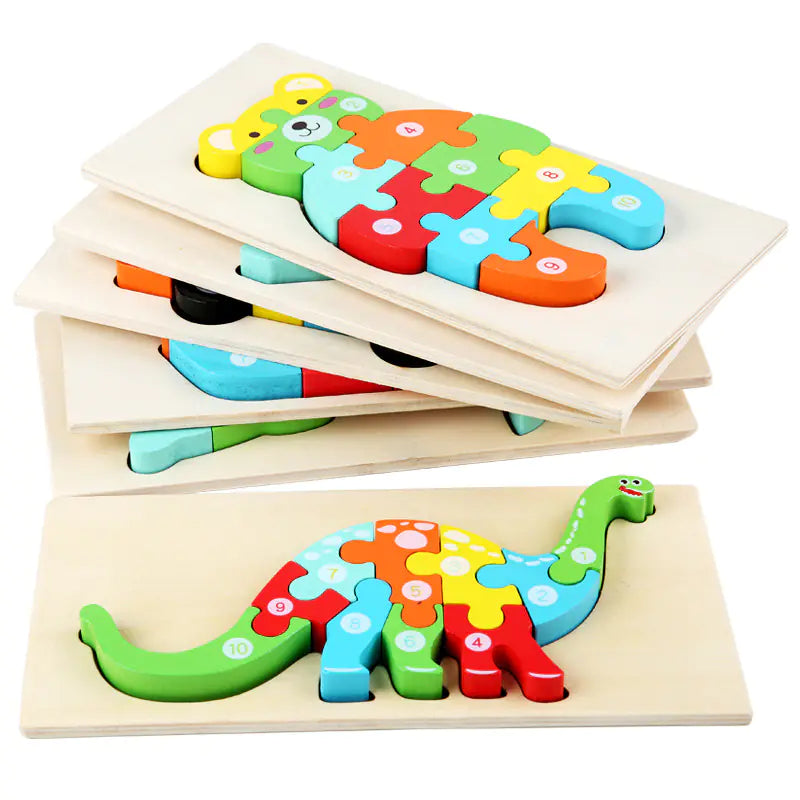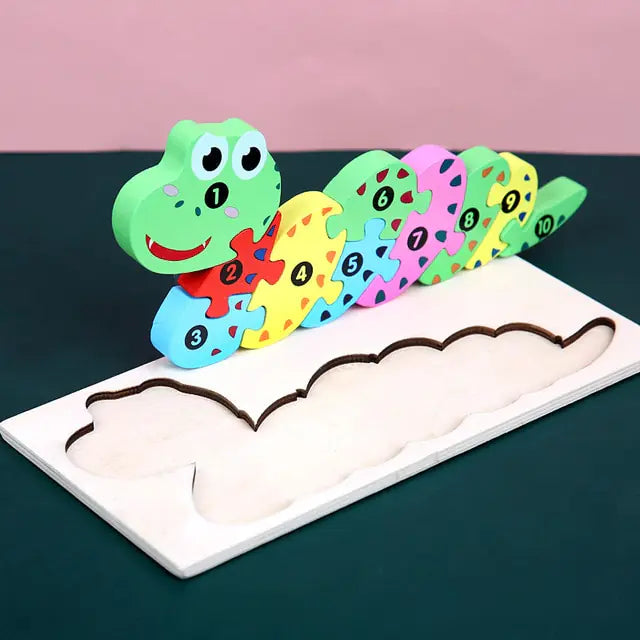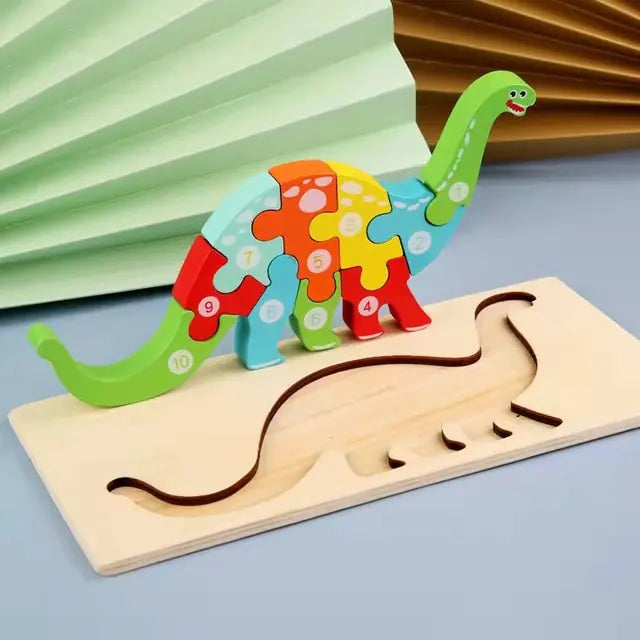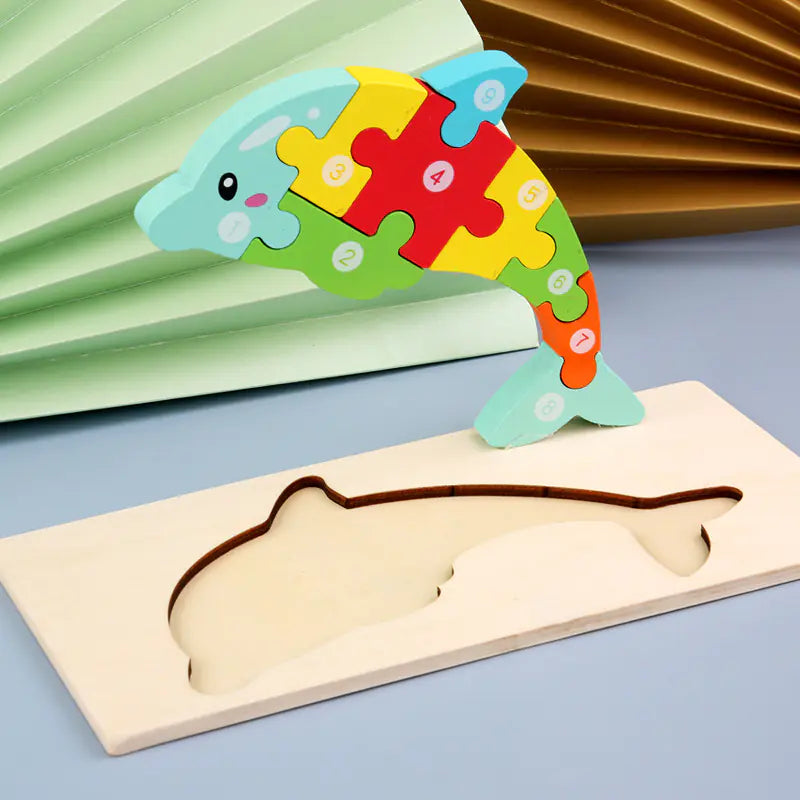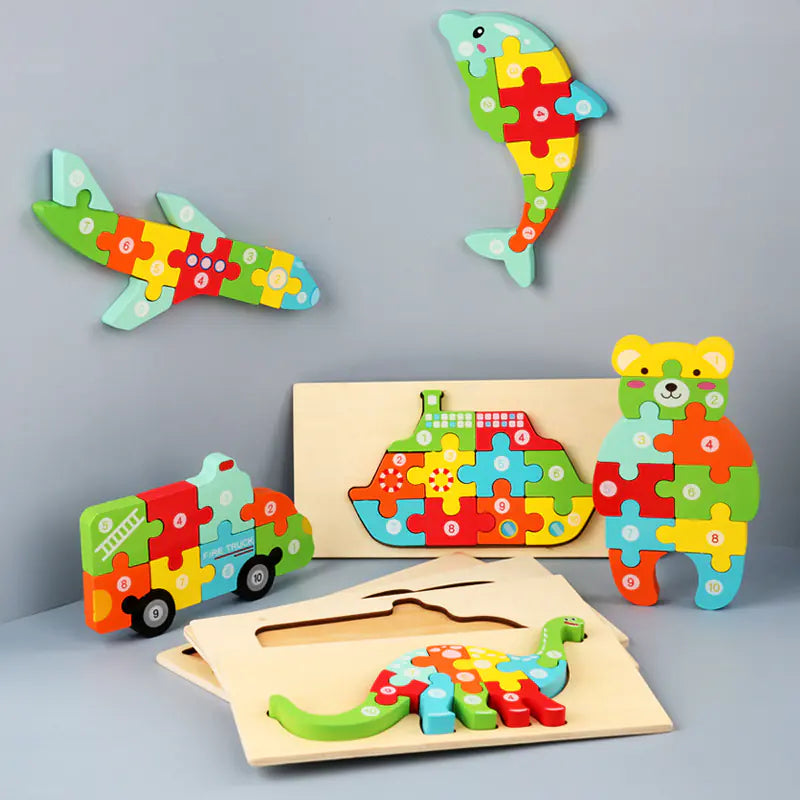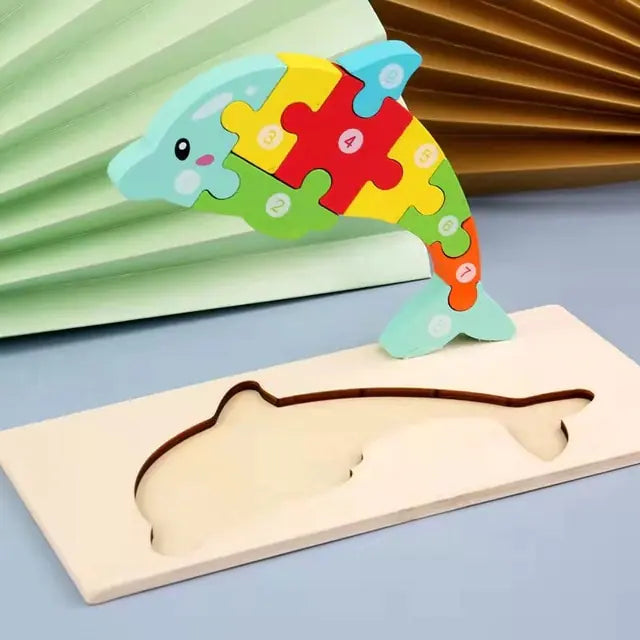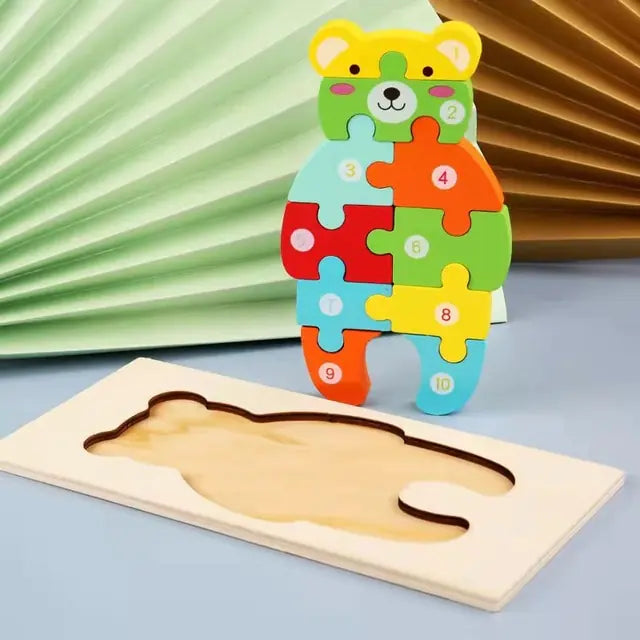In today's dynamic world, sensory development in children is a critical aspect of their overall growth. Learning toys, specifically designed to stimulate the senses, can play a significant role in this developmental phase. These toys not only provide entertainment but also contribute to the enhancement of sensory skills such as touch, hearing, sight, taste, and smell. Parents and educators can support and encourage a more comprehensive developmental process by integrating sensory play into a child's daily routine. This article delves into the various types of learning toys and offers insights into how they can be used effectively to nurture sensory development in children.
Unlocking Sensory Play with Learning Toys

Why Sensory Play Matters
Let's discuss why sensory play is crucial for our little ones. Educational toys enhance children's sensory skills and developmental milestones through hands-on exploration, auditory stimulation, and visual engagement with interactive tools and activities. It's not just about keeping them busy but nurturing their growing brains and bodies.
Sensory play also promotes exploration, creativity, curiosity, and problem-solving. When your child engages their five senses, they learn about the world in the most natural and impactful way. Watching them discover new textures, sounds, and colors is a joy, right?
Sensory play isn't a fancy term for complicated activities; it's about the simple joys that come from experiencing the world. Whether it's the squish of playdough or the jingle of a musical toy, these experiences lay the foundation for lifelong learning.
Remember, every child is unique, and sensory play respects that individuality. It offers a personalized approach to learning that can be tailored to your child's interests and developmental stage. So, let's embrace the power of play and give our kids the best start in life!
Types of Sensory Learning Toys
As I delve into sensory learning toys, I'm amazed at the variety available to support our little ones' sensory development. Sensory toys come in all shapes and sizes, each designed to stimulate different senses and promote learning through play. For instance, we have textured balls and soft blocks for tactile exploration, musical instruments for auditory stimulation, and colorful puzzles for visual engagement.
Let's break it down a bit:
- Tactile toys like sand and water tables encourage hands-on play.
- Auditory toys, such as shakers and bells, captivate with sounds.
- Visual toys, including light-up gadgets and shape sorters, dazzle the eyes.
- Olfactory toys with scented playdough make sniffing fun.
- Taste-safe toys, like edible paints, are perfect for little mouths.
Choosing the right sensory toy can be a game-changer in your child's development. It's about finding a toy that will not only entertain but also educate and inspire.
Remember, the goal is to provide a sensory-rich environment that holistically fosters your child's growth. Whether you're looking for something to soothe or stimulate, a sensory toy out there is perfect for your child's needs. And as they grow, their sensory play can evolve with more complex toys that challenge their developing skills.
Creating a Sensory-Friendly Environment
Creating a sensory-friendly environment at home isn't just about piling up a bunch of toys; it's about crafting a space that caters to your child's unique sensory needs. Think of it as a personal retreat that can either dial down the noise for a sensory avoider or ramp up the stimulation for a sensory seeker. A well-designed sensory space can make a difference, allowing kids to regulate their emotions and behaviors.
To get started, consider these simple steps:
- Identify your child's sensory preferences: Do they seek out movement or need a quiet corner?
- Choose suitable toys and materials that match these preferences, like a mini-trampoline for jumpers or a weighted blanket for cuddlers.
- Arrange the room to minimize distractions and maximize comfort, using soft lighting or noise-canceling headphones as needed.
Remember, the goal is to create an environment that feels just right for your child. It's where they can explore, learn, and grow at their own pace, surrounded by the right sensory inputs that help them thrive.
The Magic of Touch: Tactile Toys for Sensory Development

Exploring Textures with Different Materials
When it comes to sensory play, the magic is often in the textures. I've found that introducing various materials can be a game-changer for my little one's sensory development. Different textures stimulate the tactile senses, helping kids understand and differentiate the world around them.
- Playdough, for instance, is a classic that never fails to engage. Adding elements like rice or beads can create a whole new sensory experience. And let's not forget about kinetic sand – it's a hit in our house! It flows through fingers yet holds shapes, which is fascinating for kids and adults.
Encouraging kids to explore materials with diverse textures not only supports their sensory growth but also sparks their creativity.
Here's a quick list of materials to consider:
- Shaving cream for foamy fun
- Textured fidget toys for tactile stimulation
- Fabrics with different weaves and feels
- Spongy materials for a soft touch
Remember, the goal is to provide a rich, safe, enjoyable sensory environment. So, always look for non-toxic and child-friendly options. And if you're on the go, look for toys like the Teytoy textured sensory balls—they're fabulous for travel and easy to carry.
The Role of Tactile Toys in Fine Motor Skills
I've seen how tactile toys can be a game-changer for kids' fine motor skills. Take Play-Doh and clay, for example. These squishy favorites aren't just fun; they're a workout for little fingers. Rolling, squeezing, and shaping the dough helps strengthen hand muscles and improve agility. And it's not just about strength; these activities enhance coordination and control, which are crucial for tasks like writing and buttoning.
Here's a quick list of tactile toys that I've found to be super helpful for fine motor development:
- Building sets for constructing and deconstructing
- Arts and crafts kits for cutting, gluing, and creating
- Musical instruments for grasping and manipulating
Remember, it's not just about the toys; it's about the rich sensory environment they create. Encouraging kids to engage with a variety of textures and materials can support their learning and development, especially for those with special needs.
DIY Tactile Toy Ideas
I've found that making DIY tactile toys is a fun activity to share with my kids and gives them a unique sensory experience that store-bought toys can't match. Creating sensory bins can be as simple as filling a container with items like rainbow rice, pom poms, or even homemade slime. The possibilities are endless, and the benefits for fine motor skills and sensory exploration are immense.
Remember, the key is to use a variety of textures and materials to stimulate different sensory responses.
Here's a quick list to get you started on your DIY sensory adventure:
- Cloud Dough: Soft and moldable, perfect for shaping and squishing.
- Kinetic Sand flows through fingers yet holds shapes, offering a unique texture.
- Playdough: Add essential oils or textures for an enhanced sensory experience.
- Homemade Slime: Stretchy and squishy, it's a hit with older kids.
Incorporating these ideas into playtime gives your child a delightful sensory experience, fosters creativity, and promotes fine motor development. Plus, it's a fantastic way to bond and create lasting memories.
Listen Up: Auditory Toys That Tune In to Development

How Sound Influences Sensory Growth
I've seen how suitable auditory toys can improve a child's sensory development. Toys and puzzles with sound elements enhance language development in children by encouraging listening, repetition, and vocabulary learning through engaging, hands-on experiences. It's not just about hearing the sounds; it's about processing them, understanding them, and learning to respond. This is where the magic happens.
Auditory toys aren't just for fun—they're a critical part of learning. From musical instruments that promote rhythm and melody to electronic devices that offer a variety of sounds, these toys help children discern different auditory inputs, which is essential for cognitive growth. Here's a quick list of benefits:
- Encourages auditory discrimination
- Supports language and literacy skills
- Enhances memory and attention span
- Fosters musical interest and creativity
Remember, the goal is to provide a rich auditory environment that will nurture your child's sensory development. By doing so, we're not just playing; we're setting the foundation for a lifetime of learning.
Choosing the Right Auditory Toys
When picking the perfect auditory toys for our little ones, I always remember that the goal is to enrich their sensory development through sound. It's essential to select fun toys and contribute to their learning journey. For school-age children, musical instruments and audio devices can be a fantastic way to explore creativity and self-expression. Here's a quick list of auditory toys that can make a big difference:
- Musical instruments like drums, xylophones, and keyboards
- Karaoke machines for singing and language development
- Audiobooks and storytelling devices to enhance listening skills
Remember, the key is to balance educational value and playfulness. We want our kids to thrive and grow through play, and suitable auditory toys can set the stage for a symphony of learning experiences.
As a guide to creating a stimulating learning environment, consider age-appropriate toys, self-directed play, and a toy rotation system for optimal development. This approach ensures that our kids are not only entertained but are also building crucial skills as they play.
Making Music with Learning Toys
I've found that one of the most joyful sounds in my home is my little one's giggle as they bang away on a drum or tinkle the keys of a piano toy. It's not just fun; it's a fundamental part of their sensory development. Musical toys are like a playground for the ears, and they come in all shapes and sizes, from simple rattles to mini orchestras.
- Musical instruments for toddlers, like drums and keyboards, often feature cute patterns to help them learn shapes, numbers, and letters.
- Karaoke machines and audio devices allow school-age kids to explore their musical talents and boost creativity.
- For the little composers, various sound-producing toys can enhance their auditory discrimination and encourage them to create symphonies.
By integrating musical toys into playtime, we're not just entertaining our kids; we're tuning their auditory skills and laying the foundation for a lifelong appreciation of music. It's a harmonious blend of play and learning that strikes the right chord every time.
Visual Delights: Toys That Dazzle and Develop

Colorful Play for Visual Stimulation
As a parent, I always look for ways to brighten up my child's playtime while boosting their development. That's where colorful learning toys come into play—literally! These vibrant treasures are more than just eye candy; they're a feast for young eyes that can significantly enhance visual development. Bold colors and contrasting patterns grab their attention and encourage visual tracking, crucial for reading and writing skills later.
Visual stimulation is critical during the early years, and it's incredible how something as simple as a brightly colored ball can captivate and hold a child's interest. Here's a quick list of some of my go-to toys for visual engagement:
- High-contrast books and cards
- Colorful stacking rings
- Light-up toys and flashlights for play in the dark
- Rainbow-colored puzzles and blocks
Remember, the goal is to provide a variety of hues and shapes to keep those little eyes curious and exploring. It's not just about the visual treat; it's about nurturing their ability to see and understand the world around them.
When selecting toys, I consider their potential to grow with my child. A toy that offers different levels of complexity can be a significant investment, ensuring it remains relevant and stimulating as my kiddo's visual skills sharpen. And let's not forget the sheer joy that a burst of color can bring to playtime—it's like watching a little artist discovering their palette for the first time!
Light and Shadow: Visual Toys for Curious Minds
As a parent, I'm always looking for toys that entertain and contribute to my child's development. Visual toys, especially those that involve light and shadow, come into play. These toys are not just about dazzling the eyes but about nurturing curiosity and understanding of the world around us.
Visual toys that use light and shadow can be incredibly stimulating for young minds. They help children grasp the concept of cause and effect as they see how shadows change with the movement of light. It's a simple yet profound way to boost cognitive skills.
Stained glass suncatchers are a perfect example of this. They're beautiful to look at and serve as a practical lesson in color mixing and light diffusion. Here's a quick list of other toys that can brighten up your child's sensory play:
- Shadow puppets
- Light tables with translucent blocks
- Prisms and kaleidoscopes
Remember, the key is to find toys that engage your child's senses and imagination. The interplay of light and shadow offers a unique sensory experience that can lead to hours of exploration and discovery.
When selecting toys, consider the endless possibilities that light and shadow can offer. From a simple flashlight used during a game of shadow tag to more complex light-up puzzles, the options are vast. Encourage your child to experiment with different light sources and see what new games and learning experiences they can invent.
Puzzles and Patterns: Enhancing Visual Perception
I've always been fascinated by how suitable toys can do wonders for a child's development. Take puzzles, for example. They're not just a fun challenge but a workout for the brain, especially regarding visual perception. Puzzles require kids to recognize patterns and shapes, a key part of cognitive development. And it's not just about the big picture; focusing on the small details helps sharpen their attention to detail.
By engaging with puzzles, children learn to identify and sort visual information, which is crucial for reading and math skills later on.
But it's not all about buying the latest and most excellent toys. Sometimes, the best visual stimulators are the simplest ones. Here's a quick list of ideas to enhance visual perception through play:
- Color sorting games to distinguish different hues
- Shape sorters to match and name shapes
- Pattern blocks to create and replicate designs
Remember, the goal is to provide various experiences that challenge and engage your child's visual skills. So, next time you're browsing the toy aisle or our website, think about how each toy might help your little one's eyes and brain work together in new and exciting ways.
Tasty Discoveries: How Learning Toys Can Engage Taste

Safe and Edible Sensory Toys
As a parent, I'm always looking for play options that are fun and safe for my little ones to explore with all their senses, including taste. Safe and edible sensory toys are a game-changer, especially for younger children still putting everything in their mouths. These toys allow babies to explore through edible, messy play without any worries about harmful substances.
- Lattooland offers 100% non-toxic sensory play kits and organic clay that are lab-tested and natural, ensuring peace of mind while your kids play.
- Seattle Nanny suggests allowing babies to engage with safe sensory materials, including homemade options like cloud dough or aquafaba.
When it comes to sensory play, the safety of the materials is paramount. Edible toys provide a stress-free way for parents to encourage sensory exploration.
Remember, the goal is to stimulate the sense of taste and combine it with other sensory experiences for a well-rounded developmental playtime. Mixing and matching different sensory toys can create a diverse and enriching environment for your child.
Introducing Flavors Through Play
Introducing new flavors to kids can be a fun and educational experience. Sensory toys that involve taste help little ones explore the world of flavors in a safe and controlled environment. For instance, edible playdough made with natural food coloring and flavors allows children to create and taste without worry.
- Start with simple flavors like sweet and salty, and gradually introduce more complex ones.
- Use taste-safe materials like homemade dough and flavored ice.
- Encourage exploration by mixing flavors to create new ones.
Remember, the key is to strike a balance between educational value and playfulness to ensure that children enjoy their learning experiences.
By engaging their taste buds, kids learn about different foods and enhance their critical thinking skills as they begin to understand the logical connections between different tastes. It's a delicious way to boost their development!
Combining Taste with Other Sensory Experiences
When I think about engaging my little one's senses, I love to mix things up. Combining taste with other sensory experiences can create a rich learning environment. For instance, filling a container with cooked pasta or cereal not only tickles the taste buds but also invites tiny hands to explore textures. This multi-sensory approach is perfect for curious toddlers eager to discover the world through touch and taste.
Exploring sensory play through taste can be both fun and educational. It's about more than just flavor; it's about how the experience can shape a child's sensory development. Here's a simple list to get you started:
- Safe, edible items like fruit pieces or vegetable sticks
- Taste-safe playdough for imaginative play
- Edible paints for a delicious art session
Remember, the goal is to create experiences that are tasty, visually appealing, tactile, and sometimes even aromatic. This holistic approach to sensory play can help children make connections between different senses, enhancing their overall development.
Safety first! Always supervise your children during sensory play and ensure all materials are age-appropriate and non-toxic.
The Scent of Play: Olfactory Toys for a Full Sensory Experience

Aromas and Memory: The Connection
Have you ever caught a whiff of something that instantly took you back to a cherished memory? That's the power of scent at play. Our sense of smell is closely linked to the part of the brain responsible for memory and emotions. By incorporating scented toys into our children's playtime, we can create lasting impressions that may be recalled with fondness.
Scented playdough, for example, isn't just a fun, squishy toy. It's a gateway to a multisensory learning experience. Adding a drop of lavender can calm a restless toddler, while a hint of citrus might invigorate their senses during play.
Here's a quick list of scents and the moods they can help foster in our little ones:
- Lavender: Calming and soothing
- Citrus (lemon, orange): Energizing and uplifting
- Peppermint: Refreshing and stimulating
- Vanilla: Comforting and warm
By thoughtfully selecting toys with different aromas, we can engage our children's olfactory senses to enrich their play and support their emotional development. Remember, the toys we choose play a vital role in our children's growth, enhancing their sensory experiences and their motor, language, and social skills.
Scented Playdough and Other Smelly Toys
I've discovered that scented playdough isn't just fun; it's a sensory jackpot for little noses! Adding a few drops of essential oils or spices to homemade playdough can create an olfactory adventure for our kids. Sensory Stimulation from these scents can be calming and therapeutic, making playtime an enriching experience.
Playdough is a fantastic sensory material on its own, but when we introduce different smells, we're also tapping into memory and learning connections.
Here's a quick list of scents to get you started:
- Lavender for a soothing effect
- Citrus for an energizing boost
- Cinnamon for a warm, comforting aroma
- Peppermint to refresh and invigorate
Remember, it's not just about the smell but the whole sensory experience. Kneading, rolling, and shaping the dough works those little hands and fingers, enhancing fine motor skills. And for those who are a bit crafty, there are endless DIY options. From the classic no-cook playdough to more exotic recipes like aquafaba or cloud dough, the possibilities are as limitless as your imagination.
Incorporating Natural Scents into Playtime
I've found that bringing natural scents into playtime isn't just about making things smell nice—it's a powerful way to enhance sensory development. The smell is vital to a child's development, and by introducing a variety of scents, we can stimulate their olfactory senses and create lasting memories. Here's how I like to do it:
- Sensory Exploration: Provide children with a variety of scents to explore. You can use essential oils, herbs, spices, or fresh flowers. Encourage them to sniff and describe what they smell.
- Crafty Scents: Add natural scents to homemade playdough or slime. A drop of lavender or mint can transform a simple sensory activity into a calming or invigorating experience.
- Nature's Bounty: Take playtime outside whenever possible. The fresh air, combined with the natural odors of the outdoors, offers an unbeatable sensory treat.
Remember, the goal is to encourage exploration and creativity in children through sensory play. By integrating scents, we're not just developing cognitive and motor skills; we're also nurturing their problem-solving abilities in a fun and engaging way.
Always keep in mind the preferences and sensitivities of each child. Some may be more sensitive to certain scents than others. It's all about finding that sweet spot where playtime becomes a rich tapestry of smells, textures, and joy.
Balancing Act: Proprioceptive and Vestibular Toys for Body Awareness

Understanding Proprioception and Vestibular Input
As I delve into sensory play, I've learned that it's not just about the five senses we all know. There's more to it, like proprioception and the vestibular sense, which are crucial for our kids' development. Proprioception is our body's ability to sense its position and movement, while the vestibular sense helps balance and coordination. When your child jumps, spins, or swings, they're not just playing—they enhance these senses!
Proprioception and vestibular input are essential for kids to feel confident in their movements, whether climbing a jungle gym or simply writing their names. Toys that encourage pushing, pulling, and lifting provide proprioceptive input, while swings and balance boards stimulate the vestibular system. Here's a quick list of activities that support these sensory inputs:
- Climbing on playground structures
- Playing with push-and-pull toys
- Jumping on a trampoline
- Balancing on a beam or balance board
Remember, sensory play is a powerful tool for growth. It's not just fun; it's foundational for learning and development.
Toys That Encourage Movement and Balance
I've seen how suitable toys can affect a child's physical development. Toys for physical development, like balance and bounce toys, bikes and trikes for toddlers, and puzzle adventures, make playtime more dynamic, enhance spatial awareness, and promote active play for children's growth. These toys are not just about fun; they're pivotal in building the foundation for a healthy, active lifestyle.
Italics aren't just for emphasis; they remind us that movement is essential to sensory development. When kids engage with toys that require balance and coordination, they're not just playing but learning. Here's a quick list of benefits these toys provide:
- Improved gross motor skills
- Better balance and coordination
- Enhanced muscle development
- Increased confidence in physical abilities
Remember, the key is to balance educational value and playfulness. So, consider incorporating some of these recommended toys into your child's playtime and watch them thrive and grow through play.
Integrating Sensory Toys into Physical Activities
I've found that weaving sensory toys into physical activities makes exercise more fun for kids and enhances their sensory development. Sensory materials and experiences can be wonderfully engaging, offering a physical workout and mental stimulation. For instance, using textured balls or balance beams during playtime can improve coordination and sensory processing.
- Provide sensory breaks such as walking in circles or jumping on a mini-trampoline to help kids get the input they crave without overwhelming them.
- Encourage using fidgets and chewable items during activities to keep little hands and mouths busy, leading to better focus and participation.
By thoughtfully incorporating sensory toys into physical activities, we create a rich environment that nurtures a child's development in a holistic way.
Remember, the goal is to make these activities a regular part of your child's routine. Start with simple games that incorporate sensory stimulation and gradually introduce more complex challenges as your child grows more confident. It's all about finding that sweet spot where physical activity meets sensory exploration!
From Solo Play to Social Interaction: Sensory Toys That Encourage Sharing

Fostering Teamwork with Cooperative Games
I've always believed that playtime is more than just fun and games; it's a crucial part of a child's development. That's why I greatly advocate for cooperative games that encourage teamwork. These games require kids to work together towards a common goal, a fantastic way to develop their social skills and cognitive abilities. Cooperative games are not just about winning or losing; they're about the journey, the laughter, and the shared experiences.
One of the best things about these games is that they promote communication and enhance problem-solving skills. Kids learn to articulate their thoughts, listen to others, and negotiate strategies. Seeing them celebrate their collective victories or brainstorm solutions to their challenges is heartwarming. Here's a quick list of benefits that cooperative games can offer:
- Encouraging teamwork and collective problem-solving
- Enhancing communication skills
- Cultivating patience and turn-taking
- Building empathy and understanding
Remember, the key is to strike a balance between educational value and playfulness to ensure that children enjoy their learning experiences.
So, next time you want to boost your child's development, consider adding some cooperative games. Not only will they learn valuable life skills, but they'll also have a blast doing it!
Turn-taking and Sharing with Sensory Bins
I've found that sensory bins aren't just a hit with the kids for their vibrant colors and exciting textures; they're also fantastic for teaching little ones about sharing and taking turns. When I set up a sensory bin, I ensure enough room for multiple children to explore simultaneously. This naturally encourages them to interact and negotiate who gets to play with what.
Choosing toys that encourage teamwork, sharing, and social skills is crucial for children's development. Toys serve as tools for learning essential life lessons and building connections. It's not just about the fun; it's about preparing them for the world outside our living room. And let's be honest, watching your kids learn to play and share is just heartwarming.
Here's a quick list of benefits that come from turn-taking with sensory bins:
- Foster's patience and understanding
- Teaches conflict resolution
- Encourages communication
- Builds empathy and cooperation
Remember, the goal is to create a positive and inclusive play environment where every child feels welcome to participate.
Building Social Skills Through Sensory Play
I've seen firsthand how sensory toys can be a game-changer when teaching kids about cooperation and empathy. Educational toys in playtime foster social skills like sharing, collaboration, and teamwork. When children engage in group play with sensory toys, they're not just having fun; they're learning valuable life lessons. For instance, a simple sensory bin filled with kinetic sand or rice can become a mini community as kids work together to build and explore.
Sensory play isn't just about the individual experience; it's a doorway to understanding others.
Here's a quick list of sensory toys that can encourage these skills:
- Tactile Balls for passing and catching games
- Fidget Toys to share and exchange
- Gravity Timer for taking turns during activities
By incorporating these toys into playtime, we're aiding our children's auditory, tactile, and visual sensory needs and paving the way for them to build lifelong relationships through empathy, communication, and conflict resolution.
Choosing the Right Sensory Toy: Tips and Tricks

Age-Appropriate Selections
When I'm on the hunt for the perfect sensory toy for my little one, I always remember that age matters. Toys should match the child's developmental stage to ensure they are both safe and engaging. For instance, infants are mesmerized by high-contrast black-and-white toys that stimulate visual development, while toddlers may need something they can grasp and manipulate, like chunky puzzles or soft blocks.
Here's a quick rundown of what works best at different ages:
- Infants (0-2 years): Soft toys, rattles, and play mats
- Toddlers (2-4 years): Tactile toys, simple puzzles, and sensory bins
- Preschoolers (4-6 years): Dress-up clothes, arts and crafts supplies
- School-age children (6-12 years): Science kits, musical instruments
- Adolescents (13+ years): More complex games, technology-based toys
Remember, the best sensory toys help babies, toddlers, and big kids play creatively while promoting novel multi-sensory experiences that enrich their little worlds.
It's not just about age; consider your child's interests and unique sensory needs. Some kids might be soothed by a weighted blanket or find joy in a therapy swing. The key is to observe and understand what captivates and calms your child, making playtime fun and beneficial.
Considering Individual Sensory Needs
When I hunt for the perfect sensory toy for my kiddo, I always remember that each child is unique. It's crucial to consider their individual sensory needs to ensure the toy is fun and beneficial for their development. For instance, some children might be oversensitive to sensory input, finding certain textures or sounds overwhelming. Others might be undersensitive and seek out more intense sensory experiences.
Here's a quick checklist to help you pinpoint what might work best for your child:
- Evaluate the types of activities your child gravitates towards or avoids
- Consider the central sensory system your child responds to
- Think about their current developmental milestones
- Keep safety at the forefront
- Choose toys that can evolve with your child, offering more complex play as they grow.
Remember, there's no one-size-fits-all approach to sensory play. What delights one child might not interest another is perfectly okay. It's all about finding that sweet spot where play meets their sensory landscape.
Mixing and Matching Toys for a Well-Rounded Experience
When fostering a well-rounded sensory experience for our kids, I've found that mixing and matching toys is the way to go. It's not just about having a variety of toys but about how they complement each other to enrich playtime. For instance, combining tactile toys like playdough with auditory ones like musical instruments can create a symphony of sensations that keeps little ones engaged and learning.
- Here's a quick list of sensory toy combinations that I swear by:
- Tactile puzzles with sound effects
- Scented markers for drawing with background music
- Light-up toys paired with textured play mats
Remember, the key is to balance educational value and playfulness to ensure children enjoy their learning experiences. So, consider incorporating some of the recommended educational toys into your child’s playtime and watch them thrive and grow through play.
By thoughtfully selecting toys that target different senses, we can create a rich tapestry of learning opportunities. This approach not only supports sensory development but also encourages cognitive growth and creativity.
Sensory Play Ideas for Every Season

Outdoor Sensory Activities for Summer
Summer is the perfect time to take sensory play outside, and I've found that it's a fantastic way to blend fun with developmental benefits for my kids. Water play is a hit in our household; there's nothing like running through a sprinkler or splashing in a kiddie pool to cool down and stimulate the senses. Plus, it's a breeze to set up a water table with a few toys and watch the little ones explore and learn.
Sand play is another summer favorite. Whether in a backyard sandbox or at the beach, the tactile experience of sand running through fingers is invaluable for sensory development. I like to bury small toys and have my kids dig for them, turning playtime into a treasure hunt that sharpens their sense of touch and fine motor skills.
I integrate exploration kits into our outdoor play to encourage outdoor STEM learning. It's a joy to see my kids' curiosity bloom as they engage with nature, and it lays the foundation for a lifelong appreciation of the environment. Here's a simple list of items that can turn any backyard into a sensory playground:
- Water table with various floating toys
- Sandbox with hidden treasures
- Exploration kits for nature discovery
- Safe, edible sensory toys like homemade fruit popsicles
Remember, the key to sensory play is variety and allowing your child to lead the exploration. It's not just about the toys; it's about the experiences they create and the developmental milestones they support. As a parent, I emphasize the importance of choosing age-appropriate toys that cater to my baby's development, ensuring a summer filled with growth and giggles.
Cozy Indoor Sensory Play for Winter
When the cold weather hits, I love to bring the sensory fun indoors, where it's warm and cozy. Winter is the perfect time to explore sensory activities that are both engaging and beneficial for our little ones' development. One of my favorite indoor activities is creating a sensory bin filled with items like pom poms, scoops, and small plastic animals. It's a simple setup that can provide hours of imaginative play.
Sensory play isn't just about fun; it's a critical part of learning and development, offering a way for kids to explore their senses and build neural connections.
Here's a quick list of indoor sensory activities that are perfect for the chilly season:
- Iceberg Sensory Bin: Freeze toys in water and let kids excavate them.
- DIY Zen Garden Sand Tray: A calming tactile experience.
- Playdough with Essential Oils: Engage the sense of smell and touch.
Remember, the key is to keep it playful and stress-free. Let your child lead the way and watch as they discover new textures, scents, and sounds right in the comfort of your living room.
Seasonal Sensory Bins and Crafts
As the seasons change, so do the opportunities for sensory play. I've found that creating seasonal sensory bins is a fantastic way to keep things fresh and exciting for my kids. Winter, for instance, opens up a world of sensory experiences with materials like snow, ice, and even cool-colored playdough that mimic the chilly outdoors.
Here's a quick list of sensory bin fillers that are perfect for winter:
- Cotton balls for snow
- Silver glitter represents ice
- Blue and white beads for a wintry mix
And don't forget, sensory bins aren't just for fun—they're a goldmine for developmental growth. They encourage exploration and can be incredibly calming for children. Sensory play is a key part of learning, and by incorporating seasonal themes, we're also teaching our little ones about the world around them.
Remember, the goal is to stimulate the senses while making learning an adventure. So, whether it's scooping up 'snow' or sifting through 'ice', each season brings its own special touch to sensory play.
As the seasons change, so does the opportunity for creative play! Wonder Kids Toy Store offers a treasure trove of sensory play ideas perfect for spring blossoms, summer sunshine, autumn leaves, and winter wonderlands. Engage your child's senses and imagination with our unique selection of multifunctional 3D puzzles and educational toys. Don't let the weather limit your child's playtime adventures. Visit our website for inspiration and shop the latest in innovative playtime fun!
Wrapping It Up
Alright, folks! We've journeyed through the colorful world of learning toys and uncovered how they can be total game-changers for sensory development. From squishy textures to jingly sounds, these toys aren't just a blast to play with—they're like a workout for the senses! Remember, mixing up playtime with various sensory toys can help your little ones sharpen those sensory skills while having much fun. So, keep it playful, stay curious, and let those sensory adventures lead the way to some epic learning moments!
What are sensory learning toys, and why are they important?
Sensory learning toys are designed to engage children's senses, including touch, sight, hearing, taste, and smell. They are essential because they support sensory development and can enhance cognitive, motor, and social skills.
How do tactile toys help with sensory development?
Tactile toys stimulate the sense of touch and help children develop fine motor skills, distinguish different textures, and learn about the environment through physical contact.
Can learning toys improve auditory development?
Yes, auditory toys that produce sounds or music can aid in auditory development by helping children differentiate sounds, develop language skills, and improve listening abilities.
What types of visual toys are best for sensory development?
Visual toys with bright colors, patterns, and puzzles can stimulate visual perception and help with eye coordination, focus, and visual tracking.
Are there any safe taste-based sensory toys for children?
Yes, edible sensory toys like flavored teething rings and safe-to-eat playdough can engage a child's sense of taste safely.
How do scented toys impact sensory play?
Scented toys can enhance sensory play by engaging the sense of smell, closely linked to memory and emotions, providing a more immersive play experience.
What is the role of proprioceptive and vestibular toys?
Proprioceptive and vestibular toys help with body awareness and balance. They include toys that require pushing, pulling, and movement, aiding physical coordination and spatial orientation.
How do I choose a suitable sensory toy for my child?
Consider your child's age, individual sensory needs, and interests. It's also beneficial to select toys that offer a variety of sensory experiences and can grow with your child.
